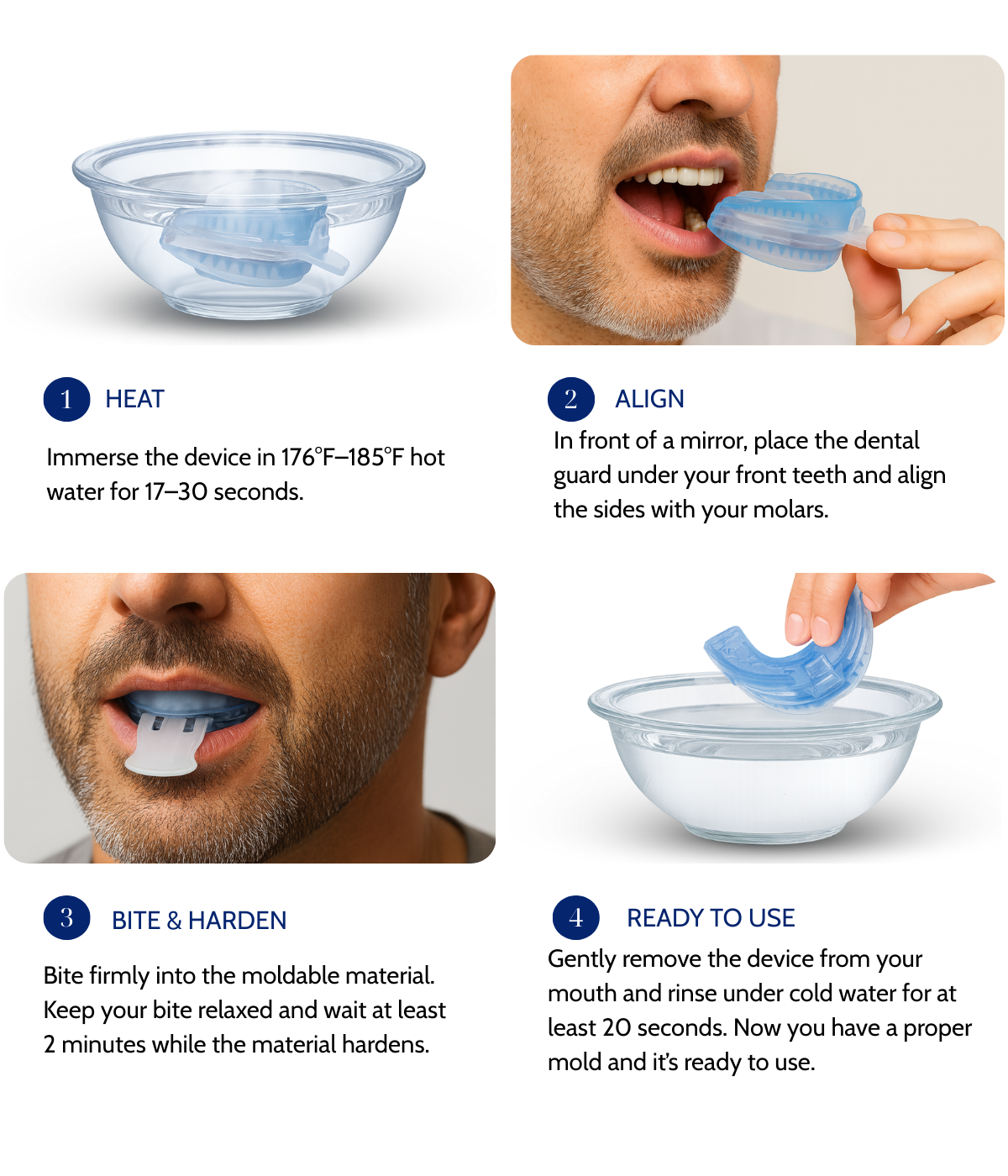Lower Jaw Adjustment Process
Purpose: Fine-tune the lower tray to match your snoring level and provide maximum comfort.
Step 1: Initial Adaptation
For the first few nights, use the mouthpiece at 0mm forward position (no advancement of the lower jaw).
This helps your mouth get accustomed to the device.
After this period, if snoring persists, begin adjusting the lower tray.
Step 2: Detach the Tray
a. Remove the upper tray of the mouthpiece.
b. Hold the front part of the lower tray with your left hand.
c. With your right hand, hold the end of the middle layer.
Step 3: Adjust the Lower Tray
Squeeze the middle layer with your right hand.
While squeezing, move the lower tray forward with your left hand.
Adjust 1mm at a time (maximum advancement: 4mm).
Release the middle layer to lock the new position.
Step 4: Reverse Adjustment (if needed)
If you feel discomfort, you can reverse the adjustment.
Squeeze the middle layer again and push the lower tray backward.
Release the middle layer to fix the position.
Step 5: Reattach the Upper Tray
Once the adjustment is complete, reattach the upper tray to the mouthpiece.
👉 Adjustment Guidelines:
Increase the lower tray 1mm at a time, checking if snoring is reduced.
Continue adjusting gradually until you reach the desired result.
Avoid moving the tray forward too much at once to prevent jaw pain or discomfort.





